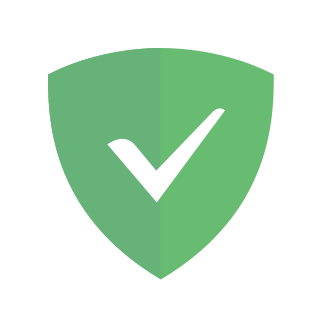Related Research Articles
An Internet filter is software that restricts or controls the content an Internet user is capable to access, especially when utilized to restrict material delivered over the Internet via the Web, Email, or other means. Such restrictions can be applied at various levels: a government can attempt to apply them nationwide, or they can, for example, be applied by an Internet service provider to its clients, by an employer to its personnel, by a school to its students, by a library to its visitors, by a parent to a child's computer, or by an individual user to their own computers. The motive is often to prevent access to content which the computer's owner(s) or other authorities may consider objectionable. When imposed without the consent of the user, content control can be characterised as a form of internet censorship. Some filter software includes time control functions that empowers parents to set the amount of time that child may spend accessing the Internet or playing games or other computer activities.
The Domain Name System (DNS) is a hierarchical and distributed name service that provides a naming system for computers, services, and other resources on the Internet or other Internet Protocol (IP) networks. It associates various information with domain names assigned to each of the associated entities. Most prominently, it translates readily memorized domain names to the numerical IP addresses needed for locating and identifying computer services and devices with the underlying network protocols. The Domain Name System has been an essential component of the functionality of the Internet since 1985.

In computer networking, a proxy server is a server application that acts as an intermediary between a client requesting a resource and the server providing that resource. It improves privacy, security, and possibly performance in the process.
Various anti-spam techniques are used to prevent email spam.
Internet security is a branch of computer security. It encompasses the Internet, browser security, web site security, and network security as it applies to other applications or operating systems as a whole. Its objective is to establish rules and measures to use against attacks over the Internet. The Internet is an inherently insecure channel for information exchange, with high risk of intrusion or fraud, such as phishing, online viruses, trojans, ransomware and worms.
Ad blocking or ad filtering is a software capability for blocking or altering online advertising in a web browser, an application or a network. This may be done using browser extensions or other methods or browsers with inside blocking.
Pharming is a cyberattack intended to redirect a website's traffic to another, fake site by installing a malicious program on the victim's computer in order to gain access to it. Pharming can be conducted either by changing the hosts file on a victim's computer or by exploitation of a vulnerability in DNS server software. DNS servers are computers responsible for resolving Internet names into their real IP addresses. Compromised DNS servers are sometimes referred to as "poisoned". Pharming requires unprotected access to target a computer, such as altering a customer's home computer, rather than a corporate business server.

OpenDNS is an American company providing Domain Name System (DNS) resolution services—with features such as phishing protection, optional content filtering, and DNS lookup in its DNS servers—and a cloud computing security product suite, Umbrella, designed to protect enterprise customers from malware, botnets, phishing, and targeted online attacks. The OpenDNS Global Network processes an estimated 100 billion DNS queries daily from 85 million users through 25 data centers worldwide.
DNS rebinding is a method of manipulating resolution of domain names that is commonly used as a form of computer attack. In this attack, a malicious web page causes visitors to run a client-side script that attacks machines elsewhere on the network. In theory, the same-origin policy prevents this from happening: client-side scripts are only allowed to access content on the same host that served the script. Comparing domain names is an essential part of enforcing this policy, so DNS rebinding circumvents this protection by abusing the Domain Name System (DNS).
DNS hijacking, DNS poisoning, or DNS redirection is the practice of subverting the resolution of Domain Name System (DNS) queries. This can be achieved by malware that overrides a computer's TCP/IP configuration to point at a rogue DNS server under the control of an attacker, or through modifying the behaviour of a trusted DNS server so that it does not comply with internet standards.
Server Name Indication (SNI) is an extension to the Transport Layer Security (TLS) computer networking protocol by which a client indicates which hostname it is attempting to connect to at the start of the handshaking process. The extension allows a server to present one of multiple possible certificates on the same IP address and TCP port number and hence allows multiple secure (HTTPS) websites to be served by the same IP address without requiring all those sites to use the same certificate. It is the conceptual equivalent to HTTP/1.1 name-based virtual hosting, but for HTTPS. This also allows a proxy to forward client traffic to the right server during TLS/SSL handshake. The desired hostname is not encrypted in the original SNI extension, so an eavesdropper can see which site is being requested. The SNI extension was specified in 2003 in RFC 3546

In computing, a blacklist, disallowlist, blocklist, or denylist is a basic access control mechanism that allows through all elements, except those explicitly mentioned. Those items on the list are denied access. The opposite is a whitelist, allowlist, or passlist, in which only items on the list are let through whatever gate is being used. A greylist contains items that are temporarily blocked until an additional step is performed.
Norton ConnectSafe was a free public DNS service offered by Symantec Corporation that claimed to offer a faster and more reliable web browsing experience while blocking undesirable websites. The service was retired on November 15, 2018.
DNSCrypt is a network protocol that authenticates and encrypts Domain Name System (DNS) traffic between the user's computer and recursive name servers. DNSCrypt wraps unmodified DNS traffic between a client and a DNS resolver in a cryptographic construction, preventing eavesdropping and forgery by a man-in-the-middle.
Domain Name System blocking, or DNS blocking / filtering, is a strategy for making it difficult for users to locate specific domains or websites on the Internet. It was first introduced in 1997 as a means to block spam email from known malicious IP addresses.
Web filtering in schools blocks students from inappropriate and distracting content across the web, while allowing sites that are selected by school administrators. Rather than simply blocking off large portions of the Internet, many schools utilize customizable web filtering systems that provide them with greater control over which sites are allowed and which are blocked. Schools will typically block social media websites, games, pornography, other distracting websites, websites that harm academic integrity, websites that bypass web filtering, etc.
DNS over HTTPS (DoH) is a protocol for performing remote Domain Name System (DNS) resolution via the HTTPS protocol. A goal of the method is to increase user privacy and security by preventing eavesdropping and manipulation of DNS data by man-in-the-middle attacks by using the HTTPS protocol to encrypt the data between the DoH client and the DoH-based DNS resolver. By March 2018, Google and the Mozilla Foundation had started testing versions of DNS over HTTPS. In February 2020, Firefox switched to DNS over HTTPS by default for users in the United States. In May 2020, Chrome switched to DNS over HTTPS by default.
DNS over TLS (DoT) is a network security protocol for encrypting and wrapping Domain Name System (DNS) queries and answers via the Transport Layer Security (TLS) protocol. The goal of the method is to increase user privacy and security by preventing eavesdropping and manipulation of DNS data via man-in-the-middle attacks. The well-known port number for DoT is 853.

Quad9 is a global public recursive DNS resolver that aims to protect users from malware and phishing. Quad9 is operated by the Quad9 Foundation, a Swiss public-benefit, not-for-profit foundation with the purpose of improving the privacy and cybersecurity of Internet users, headquartered in Zürich. Quad9 is entirely subject to Swiss privacy law, and the Swiss government extends that protection of the law to Quad9's users throughout the world, regardless of citizenship or country of residence.

AdGuard is an ad blocking service for Microsoft Windows, Linux, MacOS, Android and iOS. AdGuard is also available as a browser extension.
References
- ↑ "CleanBrowsing List of IP Addresses". CleanBrowsing. Retrieved 2020-07-23.
- ↑ Wallen, Jack (2018-08-23). "How to enable DNS over TLS in Android Pie". TechRepublic . CBS Interactive. Archived from the original on 2018-09-11. Retrieved 2018-10-11.
- ↑ Z, Nykolas (31 May 2018). "Phishing Protection — Comparing DNS Security Filters". Medium . Archived from the original on 2018-09-16. Retrieved 2018-10-11.[ self-published source ]
- ↑ Inc, CleanBrowsing. "Free DNS Filtering | Block Online Porn with CleanBrowsing". CleanBrowsing. Retrieved 2023-07-29.
{{cite web}}:|last=has generic name (help)